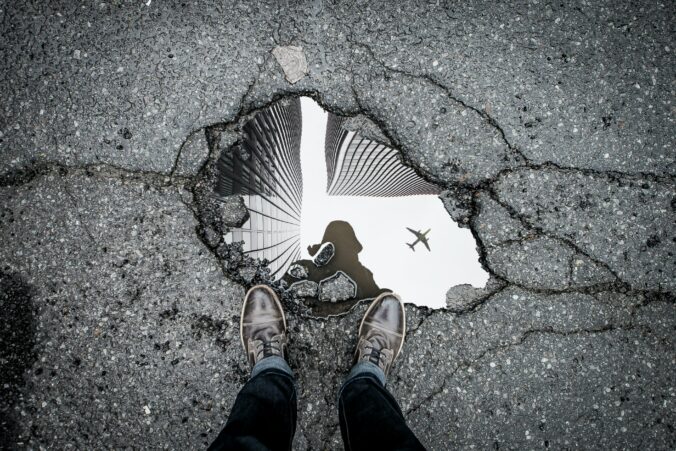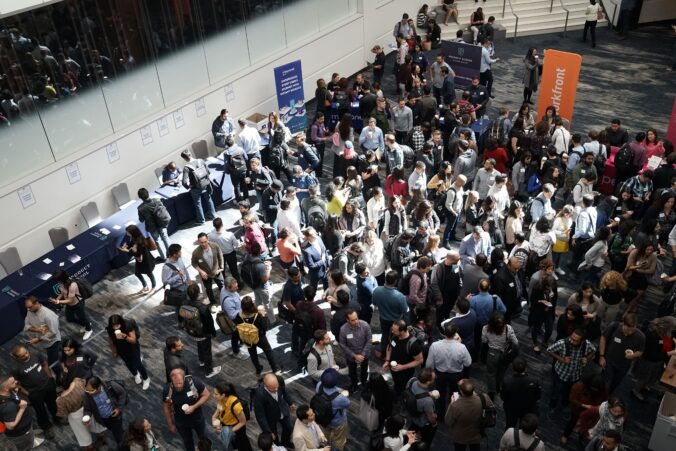As we close up for this class, it has been an eye opener for my PLN as I have never really thought about creating content, and network profusely. I now see the massive potential of having a strong PLN, to ensure that I keep learning and work with others. I have always had a closed mind when it comes to networking as I have not really expanded it. It may come from personal shyness, be introverted. As some more free time frees up, I have been trying to explore more parts of health information science, and digital health. From this class and EDCI 337, making content and multimedia posts has been fairly rewarding. I may explore this in the future which may be my preferred way of networking and getting myself out there. I should use my social media more, and engage in professional sites like LinkedIn more often for learning, and looking for employment. Using a PLN to inform myself about unreported issues is nice to have because diverse viewpoints is essential for learning and debate. This will increase my digital literacy, and my ability to critically think, fact check, and come to a conclusion. PLNs are continually created. As long as I continue to interact with my peers, and engage in conversations, I will continue learning about many things, that are taught from humans, and not necessarily educational institutions.
Category: edci338
Firstly, I would like to acknowledge I reside on the unceded territories of the xʷməθkʷəy̓əm (Musqueam), Sḵwx̱wú7mesh (Squamish), and Sel̓íl̓witulh (Tsleil-Waututh) Nations. I would like to acknowledge the tragedy uncovered at the former Kamloops Residential school where 215 children’s remains were found in a mass grave. It is a grim reminder of our country’s colonial policies, which destroyed the culture, homes, and population of Indigenous people across Canada.
Brad baker brings up many great points about social media. I admire his attitude when conversing with others and discussing topics that aren’t comfortable to talk about. Social media give an outlet for all people to voice their experiences, in this case, Indigenous mistreatment in residential school system, that traditional media may not allow on their platforms. It is one equalizing invention that has allowed silenced voices to be heard by anyone, and allow others to learn from another’s situation. Social Media allows people to learn from different cultures, which have different governance, that teach different things. It challenges people to think outside their own perspective and upbringing, and be critical of things that are not right. Difficult conversations are needed for change to happen. It likely took hundreds of uncomfortable conversations to finally add residential schools to the curriculum, which was only ended a few decades ago. There have been several misconceptions, and harmful stereotypes that are spread through education, and media. Social media allows Indigenous people to share their culture, and humanize them to counteract racism, and previous notions. Being vulnerable and open minded should be embraced when engaging in discourse with other people so people can understand the reasoning, and possibly come to an agreeing conclusion.
There is still a lot of work to be done to facilitate reconciliation and listening to them and giving Indigneous people a voice is one of the first majors steps there.
References
Brad Baker Edci 338. (2021). YouTube. https://www.youtube.com/watch?v=C5z8iHxW2n4.
Developing Personal Learning Networks for Open and Social Learning / Alec Couros- Chapter 6 – Page 128-129 & Page 137-138 in the PDF – (Page.114-115 & Page 123-124 in original text) https://www.aupress.ca/app/uploads/120177_99Z_Veletsianos_2010-Emerging_Technologies_in_Distance_Education.pdf
What goes on the internet stays on the internet. This sentiment is very real and is sometimes forgotten by users of social media, especially when interacting with people in a widespread manner. Being in the public space has many advantages as you will likely reach likeminded individuals that can provide you with opportunities to grow your network, make more money, learn new things, and find a new hobby that weren’t previously possibly. In addition, you can spread a message to a large audience, and have dialogues (positive and negative) to further refine your understanding on topics, or to have a debate and share perspectives with people with different backgrounds. Success stories like Judy Vance and her place on Sportsnet, can come from having a large network, and lots of hard work. However being a very public figure has its downsides. Conflicts can occur with audiences as not everyone shares the same opinion on certain topics. Public figures may slip up and post about a topic they weren’t fully educated on and some opinions may be strongly worded with an accusatory tone. Sometimes figures share fake news, or news article that don’t provide the full context (News headlines are notorious for this), which is less than preferable as public figures have to maintain a certain image to continue being viewed as acceptable to their audience and outside their audience. Figures share content from unofficial sites, where facts are not cited, or may share information from official sources that have their own biases in wording, and values. As citizens of the web and social media (PLNs) it is important to take everything with a grain of salt. Media literacy is a “framework to access, analyze, evaluate and create messages in a variety of forms, build an understanding of the role of media in society, as well as [develop] the essential skills of inquiry and self-expression.” Media literacy is the ability to analyze facts, and find information from a variety of sources to corroborate information, while trying to understand the true intentions of people contributing to media. There are usually more side to every story, and not every story is posted publicly, but it is important to get most of the facts, corroborate them with each other, so that you can express your opinion (or at least hold them), and be able to defend yourself. Sometimes you may not have all the right answers, so we listen to others who have different takes to get as many perspectives as possible. It is important to do your research and get your ducks in a row to make sure you don’t accidently spread fake information.
References
21st Century Skills – Learning for Life In Our Times Trilling, B & Fadel, C
Digital Literacy Skills – Media Literacy Chapter 4 pp.66 https://learning-oreilly-com.ezproxy.library.uvic.ca/library/view/21st-century-skills/9780470475386/fade_9780470475386_oeb_c04_r1.htm
Navigating Social Journalism: A Handbook for Media Literacy and Citizen Journalism by Martin Hirst, Chapter 4. The Political Economy of Fake News – pp.78
http://ezproxy.library.uvic.ca/login?url=https://www.taylorfrancis.com/books/9781315401263
Media Voices – Jody Vance – Course YouTube Channel https://youtu.be/E-NnpQJdl0A
Inclusion in education is the meaningful incorporation of people of all abilities, and social status, in an environment that is beneficial to develop a persons education in social skills, theoretical knowledge, and a sense of responsibility (and being)(Moore, 2018). This sense of inclusion was mildly acknowledged during my co-op terms in various health authorities around BC. Co-op students often evaluated their strengths, and have the opportunity to switch around teams, and department to find the right fit that plays towards their strengths and preferences. I know full time employees are also given educational opportunities to learn extra skills (sometimes supplemented by the workplace). However, it is still a standardized workplace where people with certain skills, will do certain jobs. Some will be engaged more than others. There is a long way to go to work toward this kind of inclusion to its full potential. It is important to embrace diversity to make sure everyone is included, and validated.
Although I don’t active participate in my PLN as much as I would like to, I do see how other leaders, and public figures post, and interact with their networks. I do follow a variety of small, medium sized, and large companies and public figures with differing opinions and stances on topics and policies. I often look at the content of the posts, some of which is controversial, and look at the comments for conflicting/combatting words of peers. For example, I saw an LinkedIn Influencer, Gagan Deep, make a post a few days ago to shed light on a student who didn’t make the threshold of a civil service exam because he was born in a certain caste, even though he is the breadwinner for in his family (2021). He got barraged with comments supporting his message, and criticizing his position on the reservation aspect of the caste system. Some users argued using stories like this as propaganda can help fuel more discrimination against minorities or against a certain group. Regardless of who is wrong or right, I think it is necessary to have debates like this, as many people can express their opinions and unique experiences, which may make some people feel uncomfortable with their previous opinions, but sometimes this is okay. Reading these opinions will allow me to traverse through different outlooks on certain topics, some of which are personal, and learn more about situations. I have attached the link to the post below the references.
References
Deep, G. (2021, June 1). Gagan Deep on LinkedIn: #BAN_CASTERESERVATION #people #like: 16902 comments. LinkedIn. https://www.linkedin.com/posts/gagan-deep-4933a666_banabrcastereservation-people-like-activity-6805524858571636737-qbqz.
Moore, S. (2018, October 1). The Evolution of Inclusion: The past and future of education. YouTube. https://www.youtube.com/watch?v=PQgXBhPh5Zo.
LinkedIn is one popular for both professional, and educational learning network as it is well known and considered a standard for professional connections. Researchgate is a researched based social networking website that can be connected to LinkedIn. It seems more focused towards scientific , engineering, computer science, maths, and medicine research with similar recruitment themes of LinkedIn. Edmodo is a learning management system that one of my secondary school teachers used that included messaging and posts. But Edmodo is usually associated within one class at an educational facility, similar to Brightspaces. I assume that many learning connections happen between faculty members, and their superiors through email, and informal connections that are in person at conferences, or at workplaces.
As a student, I should be “getting out there” more and looking for more leaders in my industry (health information science/technology) and other related fields to keep up with trends and possibly investigate new ventures. Following both leaders, and emerging professionals will give me a good outlook on both sides of the spectrum to see what people are planning to do, and too see if I am interested in them. In addition, I should interact with articles on LinkedIn, and other people status updates to learn about other topics, and possibly create more connections. I should also try to maintain the current connections I have with previous course instructors, employers, and classmates by sending them emails regularly to see how their wellbeing is and how .
I think it is very possible for employers to search a name and find surface level information about a prospective candidate. Some things that might hinder this search is having strict privacy policy on certain pages, and profiles, having an alias, or having a common name. At the moment, I personally do not have a portfolio online for employers to search through. I do not have a lot of personal nor professional content that I have posted online as I am a fairly reserved person when it comes to these things. Although I should reconsider my attitude as more things happen, and as I find my path in the healthcare technology industry.
Here is a Visitor and Resident map about how I use digital platforms to interact with other online. Almost all of my online presence (very little) is personal and may require people to be in certain private group chats. It may be hard to find all social media accounts as they are under another alias. LinkedIn is my main professional networking tool as most people are on there to make professional connections.

After this weeks readings, I have thought about how I have used social media in the past, and possibly new ways I can use social media for the future. I often see my peers presence online, which vary from posting everyday, to seldom interacting with information.
Social media is a platform where people can connect with each other in hopes of sharing information about themselves, other people, organizations, news, or education. A personal learning network (PLN) involves using technology tools such as social media to connect with a group of people to engage with others through conversation, collaboration on projects, and discussion about businesses to advance oneself’s learning (Rajagopal et al., 2011).
The prospect of working at a emerging or well-established company, or individual to learn more or develop a certain topic is one advantage of a personal learning network since members try their best to engage and be active in sharing information to create more opportunities for learning, criticism, and reflection
Social media is a public forum, which leaves open many points to be exploited such as online anonymous harassment, threats, and unwanted advances. Content such as forum posts and tweets from the past may harm a prospective job if the content was inappropriate or taken out of context. Sometimes pictures that are meant for a closer peer group can be shared outside of that group and it could lead to some awkward situations.
A digital identity is someone’s “online presence” and it includes all pictures, videos, projects, status updates, and interactions with other people a person posts online (UniversityofDerby, 2016). Professional social media usage may include using different sites like LinkedIn, where a more formal environment is enforced. While personal usage of social media may include using Facebook, Twitter, and Reddit, where the environment is more casual and the subject matter is more relaxed.
My own digital identity has been very reserved and I have not posted, or reposted many things because of my shyness online. I should aim to post more though as I have realised the importance of a PLN for my future learning.
References
Rajagopal, K., Joosten-ten Brinke, D., Van Bruggen, J., & Sloep, P. B. (2012). Understanding personal learning networks: Their structure, content and the networking skills needed to optimally use them. First Monday, 17(1). https://doi.org/10.5210/fm.v17i1.3559
UniversityofDerby. (2016). Eric Stoller – What is Digital Identity? YouTube. https://www.youtube.com/watch?v=u0RryRbJza0.





Recent Comments